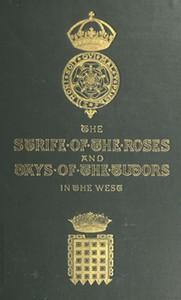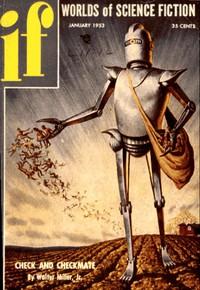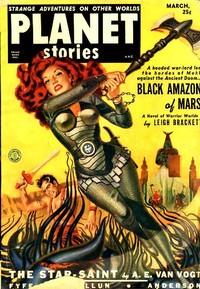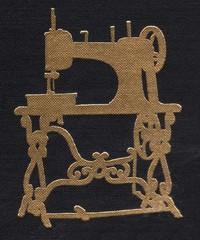Read this ebook for free! No credit card needed, absolutely nothing to pay.
Words: 121143 in 36 pages
This is an ebook sharing website. You can read the uploaded ebooks for free here. No credit cards needed, nothing to pay. If you want to own a digital copy of the ebook, or want to read offline with your favorite ebook-reader, then you can choose to buy and download the ebook.


: The Strife of the Roses and Days of the Tudors in the West by Rogers W H Hamilton William Henry Hamilton Gibbs Roscoe Illustrator - Great Britain History Tudors 1485-1603; Great Britain History Wars of the Roses 1455-1485
Entering the church by the south porch, a survey of the south aisle arcade, brings the eye at once to the memorial we are in search of.
The monument is under the second arch of the nave, west of the transept, in the south aisle. It consists of a high tomb with canopy, flanked by an entrance-doorway forming part of one composition, extending the whole breadth of the arch. This was originally one of the enclosing screens of a Chantry, the other two, east and west, dividing it from the aisle having been removed. In the wall of the aisle opposite the tomb, is a two-storied piscina, which was formerly within the area of the Chantry, and against the east division doubtless stood the antient altar.
The cover-stone of the tomb is Purbeck marble, and on it are the indents of a knight and lady, but not of large size. The knight's head appears to have rested on a helmet with lambrequin, and an animal was at his feet. The lady in long robe and head on a cushion. Two shields were above their heads, and two more below their feet. There was no ledger-line.
The canopy is of square form, flanked by buttresses pinnacled on their faces, and the groining within shews five fan-traceried pendants. At the east end is a large niche, the west is open. The doorway is surmounted by a rich ogee crocketted canopy with finial, and is panelled above.
In the churchyard, near the porch, is a large broken Purbeck marble stone, probably removed from the pavement of the Chantry within. On it are the indents of a knight, and lady in horned head-dress, under an ogee crocketted canopy, flanked by pinnacles, evidently of contemporary date with the tomb. Above the figures are two shields, below their feet the space is powdered with scrolls, and a ledger-line enclosed the whole.
Back to the railway station again, and a place among the cohort of the iron horse, for a long journey is before us, even from the open, breezy chalk-plains of Wiltshire, to the marge of the majestic Tamar in westernmost Devon, and the granite-bouldered precincts of east Cornwall, where we hope to get further clue to the haunts of Willoughby when in the flesh. Here, we are leaving what was probably his first home and earliest associations before ambition dawned on his future path; there, we shall visit his later possessions when the sun of fortune had shone on him, and he basked in its rays of honours and wealth. There also our pilgrimage will eventually lead us to that last house, the which he in common with earth's humblest denizen must share.
Before, however, we proceed further on our way to what we may term his second home, it behoves us to say something anent the antecedents and coming of the knight himself, and how the name of Willoughby originally became located in the west country. Like many a younger son rejoicing in a titled extraction, coupled with probably only a slender portion of the family patrimony, the wooing of a distaff--who, beside let us hope, being endowed with her full share of love's talisman, personal attractions, enjoyed also the further potent charm of being an heiress to boot--brought the father of our knight from the fens of Lincolnshire to the distant altitudes of Wilts, and in winning the hand of Anne Cheney for a wife, subsequently became in her right the Lord of Broke. A similar errand sent his son away to the boundary line that divides Devon from Cornwall, and with the well-dowered Blanche Champernowne of Beer-Ferrers for his helpmate, there to find his future home, and where we propose to look for him again, after we have gossiped over his lineage awhile.
Burke.
His great-grandson was Robert, fourth Lord Willoughby; he married first Alice daughter of Sir William Skipwith, and secondly Margaret daughter of William, Lord Zouch, who died in 1391. His third son Sir Thomas by Alice Skipwith, married Elizabeth daughter of John de Nevill, Lord Nevill of Raby, and Elizabeth Latimer his second wife, only daughter of William, fourth Lord Latimer of the first creation, who died in 1388. Sir Thomas was succeeded by his son Sir John Willoughby, who married Joan Welby, described as an heiress, and their son was the Sir John Willoughby, who married Anne daughter of Sir Edmond Cheney, of Broke, Wilts; whose son was Sir Robert Willoughby, the first Lord Willoughby de Broke, and subject of our little memoir. There were three other sons, William of Turners-Piddle, Dorset, who died in 1512, and was buried at Bere-Regis; Thomas, who married Isabel Bedyke of Silton, Dorset, died 1523, and ordered his body to be buried in the church there; and Edward, Dean of Exeter Cathedral, and Canon of St. George's, Windsor, who died in 1508. Also two daughters, Cicely, Abbess of Wilton, who died in 1528, and Elizabeth, married to William Carrant, of Toomer in Henstridge, Somerset.
The fine and almost perfect memorial brass of this lady is in the chancel of Spilsby church, Lincolnshire. She is habited in cote-hardie with mantle over, crenulated head-dress with coverchief, two dogs with collars and bells at her feet, her head rests on richly embroidered cushions. On the ledger-line is this inscription,
and these arms: 1. MORTIMER.--2. UFFORD and BEC quarterly, as borne by Lord Willoughby de Eresby.--3. Ros.--4. Wells.--5. Bohun.--6. Zouch.--7. Beaumont.--8. Willoughby impaling Zouch. At the angles are the emblems of the four Evangelists. There are also two other splendid figures, probably the succeeding baron and his lady, in the same chancel.
Thus far for the coming of the knight; our next care will be to trace, as far as means available enable us, his progress and actions during the eventful days in which he lived. The strife between the contending factions of the Red and White Roses, in his younger years was strongly predominant, and so thoroughly had the fierce rivalry for supreme power permeated society, that probably it was almost impossible to remain neutral, while men so blindly, yet withal so devotedly, risked their lives and fortunes in partizanship with the contending claimants of the divine right. To choose a side was an absolute necessity,--
Free books android app tbrJar TBR JAR Read Free books online gutenberg
More posts by @FreeBooks

: The Anglers of Arz by Aycock Roger D Martin Bob Illustrator - Science fiction; Short stories; Human-alien encounters Fiction Science Fiction


: Black Amazon of Mars by Brackett Leigh - Science fiction; Mars (Planet) Fiction; Stark Eric John (Fictitious character) Fiction Science Fiction; Science Fiction by Women






